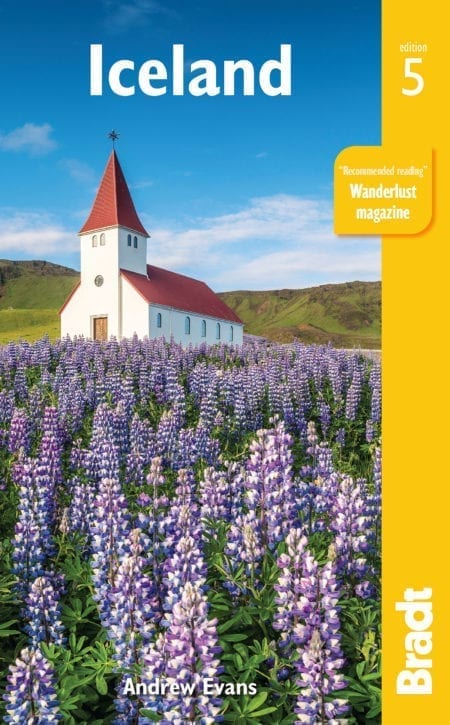Make the most of your time in the land of fire and ice with this Iceland ring road itinerary.
Iceland’s Ring Road – that single thread of tarmac unfurling across volcanic landscapes – is the key to unlocking this unique island’s wild heart. For adventurers, photographers, or simply anyone yearning to reconnect with nature, this scenic Iceland Ring Road itinerary promises an unforgettable journey.
Yet, Iceland’s beauty comes with unique challenges, and a little planning goes a long way to ensure your adventure is as epic as the landscapes.
Planning starts with this itinerary but also needs to include a reliable car rental service in Iceland, as well as brushing up on the rules of the road there.
For expert travel tips and other recommendations, check out our page on planning a trip to Iceland.
The best Iceland Ring Road itinerary
This itinerary outlines a classic 10-day Iceland road trip experience, packed with waterfalls, glaciers, and the kind of otherworldly scenery Iceland does best.
It’s your blueprint for the ultimate Iceland road trip – with insider tips and a practical travel guide to make your adventure a reality.
Ready to discover Iceland’s magic at your own pace? Let’s dive in…
Planning your trip
Planning a trip can be overwhelming, especially when you’re heading somewhere as diverse and exciting as Iceland. To make things easier, it can help to break things down.
We’ll start with the basics; deciding when you’ll go and for how many days.
When is the best time to visit Iceland?
Deciding when to embark on your Ring Road adventure is about determining your priorities. Do you dream of the aurora borealis dancing across the sky? Or vibrant wildflowers swaying under the midnight sun? Each season in Iceland offers something unique.
For the classic Icelandic experience – think cascading waterfalls, iconic black sand beaches, and lush green valleys – the summer months (June to August) bring mild weather and the most daylight hours. However, you can also expect bigger crowds and higher prices.
If seeing the northern lights is at the top of your bucket list, you’re best off travelling in winter. If you visit between late September and March, your chances of seeing those iconic green hues will increase dramatically. It’s a trade-off: shorter days and potentially harsh conditions, but you’ll have fewer tourists and the opportunity to witness nature’s spectacular light show. Find out more about traversing Iceland’s natural landscapes in winter here.
Shoulder seasons (May and September) strike a lovely balance. You might catch early wildflowers or autumn’s golden hues, and you’ll be greeted with smaller crowds to boot.
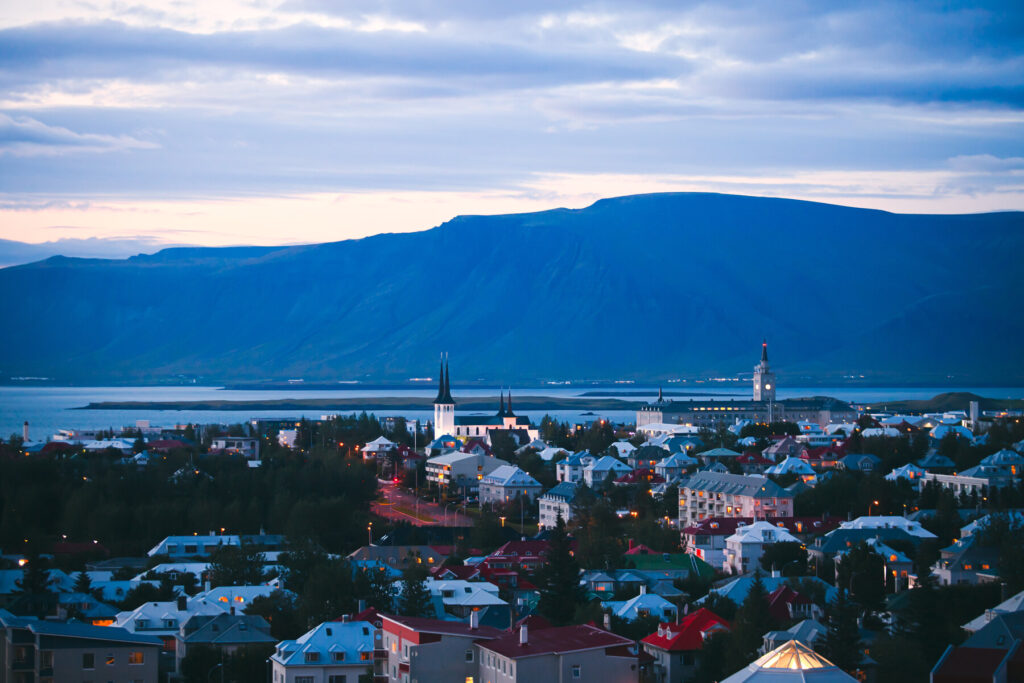
How long should I go for?
The beauty of Iceland’s Ring Road is that it caters to every traveller’s pace. Think of it as a choose-your-own-adventure kind of holiday!
- The Quick Hit (7 days): Perfect if you’re short on time but crave Iceland’s iconic highlights. Expect some long drives, but also short walks to waterfalls, visits to geothermal pools, and the opportunity to experience the vibrant energy of Reykjavík.
- The Balanced Explorer (10 days): 10 days is the sweet spot. This allows ample time to savour each region while also leaving room to add in those extra adventures. Hike a glacier, hop on a whale-watching tour, or detour to a remote fishing village – the choice is yours. Check out our round-up of the best adventure experiences in the world here.
- The Deep Dive (14+ days): Fall in love with Iceland on a slower timeline. Venture into the wild Westfjords, tackle challenging hikes, or simply linger at your favourite spots. This length is ideal if you’re travelling by camper van or want to go off the beaten track to experience everything Iceland has to offer.
Iceland’s weather conditions can always throw a curveball. So, build some flexibility into your plans regardless of how long your adventure lasts. It’s always a good idea to check out the Iceland travel advice before you go.
Essential Ring Road knowledge
Before hitting the open road, it can be helpful to get the lay of the land – a well-prepared explorer is a happy one!
Road conditions
Iceland’s main Ring Road (Route 1) is typically paved and well-maintained. However, expect some gravel road portions, especially when venturing off the main route towards hidden gems. While a regular rental car is fine for most trips, a 4×4 might be worth it if you planning on more extensive off-road explorations.
Always keep an eye on weather conditions, particularly in winter. Temporary road closures can occur due to snow or storms. The Icelandic Road and Coastal Administration’s website is your best friend for up-to-date information.
Petrol stations and other facilities
Iceland’s Ring Road is generally well-serviced with petrol or gas stations, making it easy to keep your vehicle fuelled. However, distribution isn’t always even, and the remoter areas – like parts of the North, Eastfjords, and the Interior – have long stretches of road without stations.
With this in mind, it’s important not to let your fuel tank dip too low. It’s always wise to top up whenever you see a station, especially if you’re venturing off the main Ring Road.
Booking accommodation
Booking in advance is essential, especially if you’re travelling during peak season (June-August). Iceland offers a fantastic variety of accommodation, from cosy guesthouses and farm stays, to modern apartments and hotels located just a short walk away from the main attractions.
Currency and language
The official currency is the Icelandic króna (ISK). While credit cards are widely accepted, it’s useful to have some cash on hand when you’re visiting smaller towns.
When it comes to language, English is commonly spoken, but learning a few key Icelandic phrases like “takk” (thank you) and “góðan daginn” (hello) will go a long way!
Iceland Ring Road itinerary
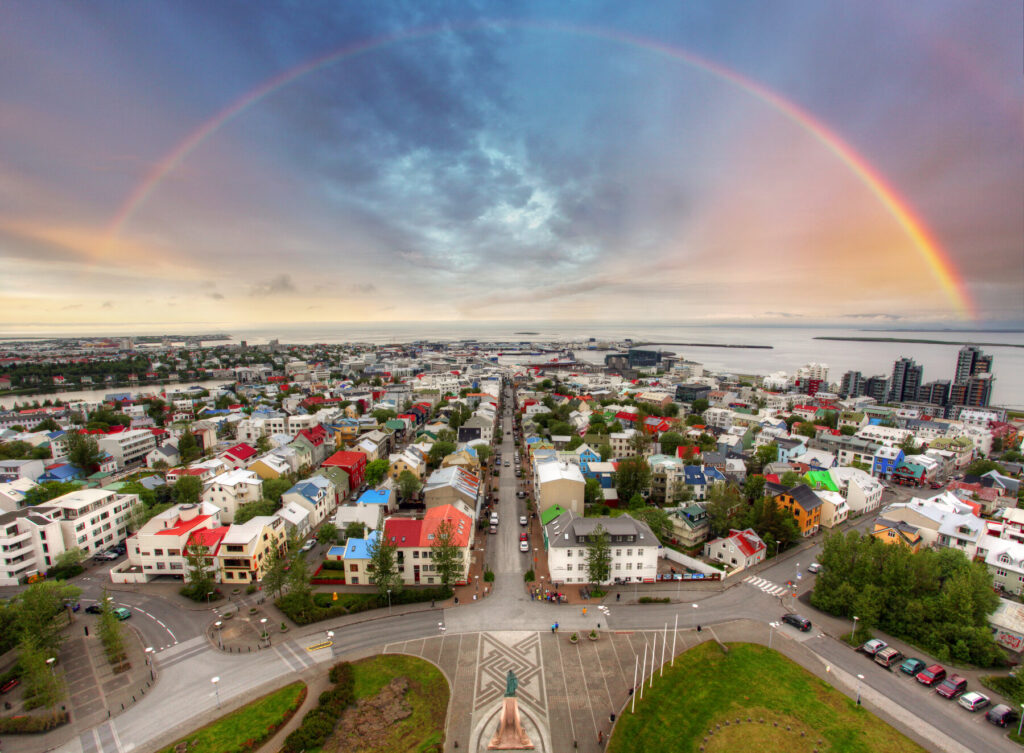
Day 1: arrival in Iceland
Your first day in Iceland is all about getting your bearings, embracing the Icelandic spirit and preparing for the adventure ahead.
Morning: arrive at Keflavík International Airport
Start your Icelandic adventure by picking up your rental car at Keflavík International Airport. The open road awaits, but your first stop is an absolute must.
Afternoon: the Blue Lagoon
Just a short drive from the airport, unwind in the milky-blue waters of the Blue Lagoon. This geothermal spa, with its silica-rich mud and steamy warmth, is the perfect place to shake off any jet lag and soak up Iceland’s unique energy.
Dining and accommodation
Stay near Keflavík for convenience – Hotel Berg and Hotel Jazz are lovely choices. Or, make the short drive to the capital city of Reykjavík for a wider selection. Experience the city’s energy at the cosy Hotel Ódinsvé or the Canopy by Hilton Reykjavik City Centre.
After your soak, treat yourself to an unforgettable dining experience at the Blue Lagoon’s Lava Restaurant. In Reykjavík, local flavours await at Fiskfélagið (Fish Company) or Messinn, a vibrant seafood restaurant.
Day 2: the Golden Circle
Iceland’s Golden Circle is one of those routes that lives up to the hype. Prepare to tick off epic geological wonders, stand beneath gushing waterfalls and witness geothermal phenomena up close.
Morning: Thingvellir National Park
Thingvellir National Park, a UNESCO World Heritage Site, is where the mighty North American and Eurasian tectonic plates visibly pull apart, meaning you can literally walk between continents. It’s a place of raw beauty and fascinating history – this is where Iceland’s parliament, the Alþingi, was founded in 930 AD.
Stroll through Almannagjá gorge, marvel at the Öxará waterfall, and imagine the Viking settlers who once gathered here.
Afternoon: Gullfoss Waterfall
A short distance from Thingvellir National Park, Gullfoss, or the “Golden Falls,” is a force of nature and a great place to spend the afternoon.
The Hvítá River, fed by glacial meltwater, cascades down in two powerful tiers. This spectacle is exhilarating on a sunny day and positively awe-inspiring when framed by ice in winter.
There are several viewpoints to experience the falls, so grab your camera and get ready to take those iconic Icelandic shots.
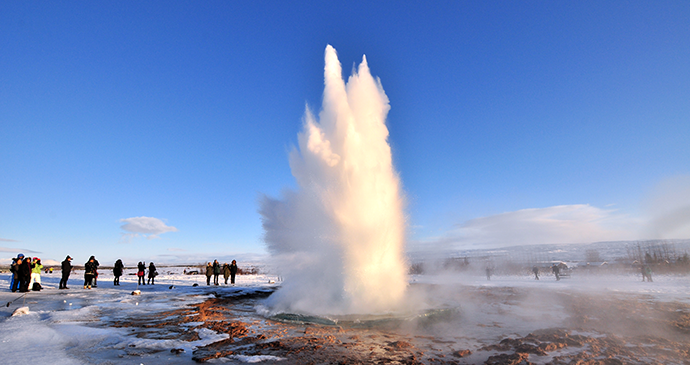
Evening: Geysir geothermal area
If you’ve ever wondered why hot springs are called ‘geysers’, this is the place to find out. While the original Geysir is less active these days, its neighbour, Strokkur, puts on a show every few minutes, sending boiling water skywards.
Wander the boardwalk amidst bubbling pools and brightly coloured mineral deposits for a truly otherworldly experience.
Bonus stops: Kerið and the Secret Lagoon
If you have extra time while exploring the Golden Circle, consider making a detour to Kerið, a striking volcanic crater lake known for its vibrant colours.
For a relaxing soak, the Secret Lagoon near Flúðir offers a hot spring experience with a more rustic, local feel than the larger, more famous Blue Lagoon.
Dining and accommodation
For a cosy stay, consider Hotel Geysir or Litli Geysir Hotel near the geysers.
If you’re pushing on towards South Iceland, spend your second night in Iceland at Hotel Selfoss or the gorgeous Hotel Ranga.
Restaurants in this area tend towards hearty Icelandic fare – try Mika Restaurant at Hotel Geysir or the farmhouse-style Skyrgerðin in Hveragerði.
Day 3: South Coast waterfalls and black sand beaches
The South Coast is all about waterfalls that tumble from cliffs, a coastline sculpted by the fierce North Atlantic, and those iconic black sands that Iceland is known for.
Morning: Seljavallalaug Geothermal Pool
Kick off your adventure with a true hidden gem: Seljavallalaug pool is one of Iceland’s oldest. Tucked away in a valley, a short hike is all that stands between you and a dip in naturally heated water. It’s a little rustic, a lot charming, and an experience you won’t soon forget.
Midday: Seljalandsfoss waterfall
Formed by the Seljalandsá River, which originates from the Eyjafjallajökull glacier, this waterfall showcases the power of nature.
The unique curve of its cliff allows you to venture behind the curtain of water. Don’t forget to bring your waterproof gear with you, otherwise you’ll get soaked!
Take a moment behind the falls to appreciate the view looking outwards, a perspective few waterfalls in the world offer.
Afternoon: Skógafoss waterfall and coastline
A short drive east takes you to Skógafoss. This mighty waterfall tumbles in a wide rectangular shape, generating a constant cloud of mist. Legend has it that a Viking once hid his treasure behind the falls. Whether or not the gold is still there, there’s adventure to be had in the climb to the viewing platform at the top.
From here, you’ll witness the Skógá River’s forceful descent and the rugged coastline stretching into the distance. This area is also near the Sólheimajökull glacier, offering potential hiking opportunities for the particularly adventurous.
Optional: Skógar, Reynisdrangar and black sands
The village of Skógar boasts the fascinating Skógasafn museum, not too far from the main road. If you have some extra time, it’s a wonderful window into traditional Icelandic life, featuring turf houses and historical artefacts.
If you have more time, a quick stop at Reynisdrangar is worth it. Legend has it these basalt sea stacks were once trolls that have since turned to stone. Admire their otherworldly shapes, then stroll along the Reynisfjara black beach – keep an eye out for puffins nesting in the cliffs during the warmer months.
Want to explore further? The area also boasts the Sólheimasandur Plane Wreck, making for an eerie and photogenic walk along the black sands.
Dining and accommodation
Base yourself in the charming town of Vík (try Hotel Vík í Mýdral or the Volcano Hotel), or journey further to Skaftafell National Park (check out Hotel Skaftafell or Fosshotel Glacier Lagoon).
For dinner in Vík, Smiðjan Brewery and Strondin Pub offer both tasty food and inviting atmospheres.
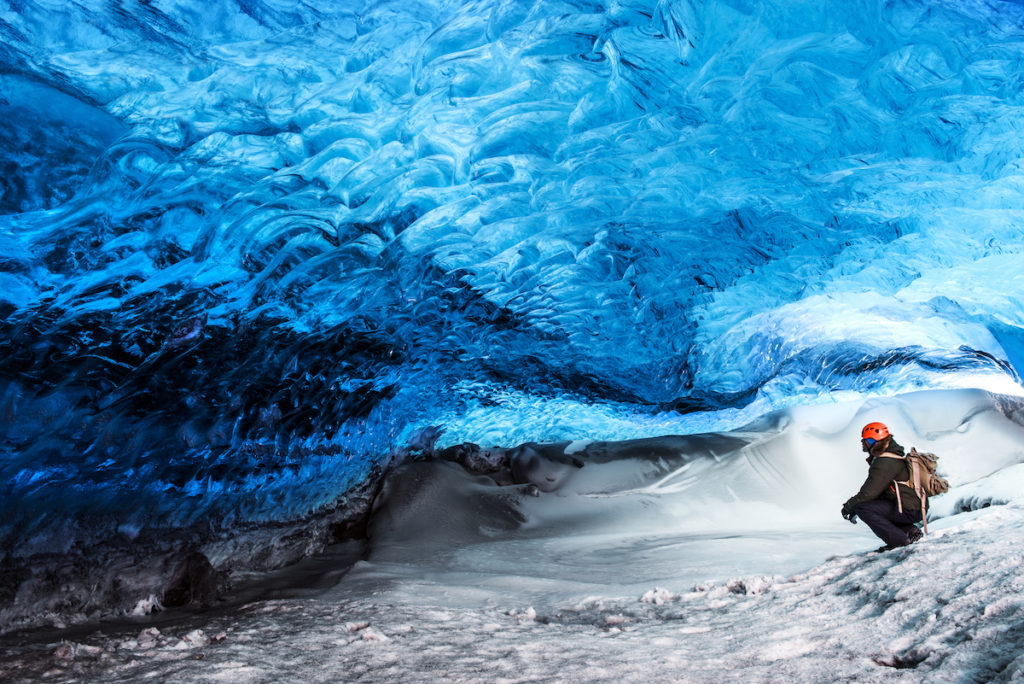
Day 4: Skaftafell National Park and Jökulsárlón Glacier Lagoon
Get those hiking boots ready because day four is all about delving into the raw beauty of Iceland’s glaciers. We’re talking ancient ice, rugged trails, and a lagoon where dazzling blue icebergs bob serenely – it’s about as close to a winter wonderland as you can get.
Morning: Skaftafell National Park
Part of the vast Vatnajökull National Park, Skaftafell is a haven for outdoor enthusiasts. Take a short hike to Svartifoss, a waterfall framed by striking black basalt columns, or embark on a longer glacier trek – crampons and guides will lead you safely onto the glistening ice. Even if you choose a shorter walk, Skaftafell’s landscapes still deliver the ‘wow’ factor.
Midday: Diamond Beach and Vatnajökull Glacier
This black sand shoreline is where icebergs, broken off from the vast Vatnajökull glacier, wash ashore. The contrast between the glittering ice chunks and the dark sand is simply magical, making it one of the most unique photo spots in the entire country. You can easily spend a few hours wandering the beach, marvelling at the ice formations in various shapes and sizes.
Afternoon: Jökulsárlón Glacier Lagoon
This is where those postcard-perfect Iceland images come to life. Jökulsárlón is a mesmerising expanse of water where icebergs – in shades of brilliant blue and white – bob on their journey towards the sea. Stretch your legs along the shoreline for the best views or hop on a boat tour for an unforgettable close-up with these ancient ice giants. Keep your eyes peeled for seals, too!
Bonus stops: boat tours and Fjallsárlón
Lagoon boat tours offer a different perspective and usually come in two options: larger, slower amphibian boats or zippy Zodiacs that let you get amongst the bergs.
If time permits, consider visiting Fjallsárlón, Jökulsárlón’s less-crowded neighbour. It’s smaller but equally beautiful!
Dining and accommodation
Stay near Jökulsárlón Glacier Lagoon (Fosshotel Glacier Lagoon or Hali Country Hotel are good options), or push onward into the East Fjords. Local, no-frills spots often have the freshest seafood – try restaurants like Otto in Höfn for a cosy and delicious meal.
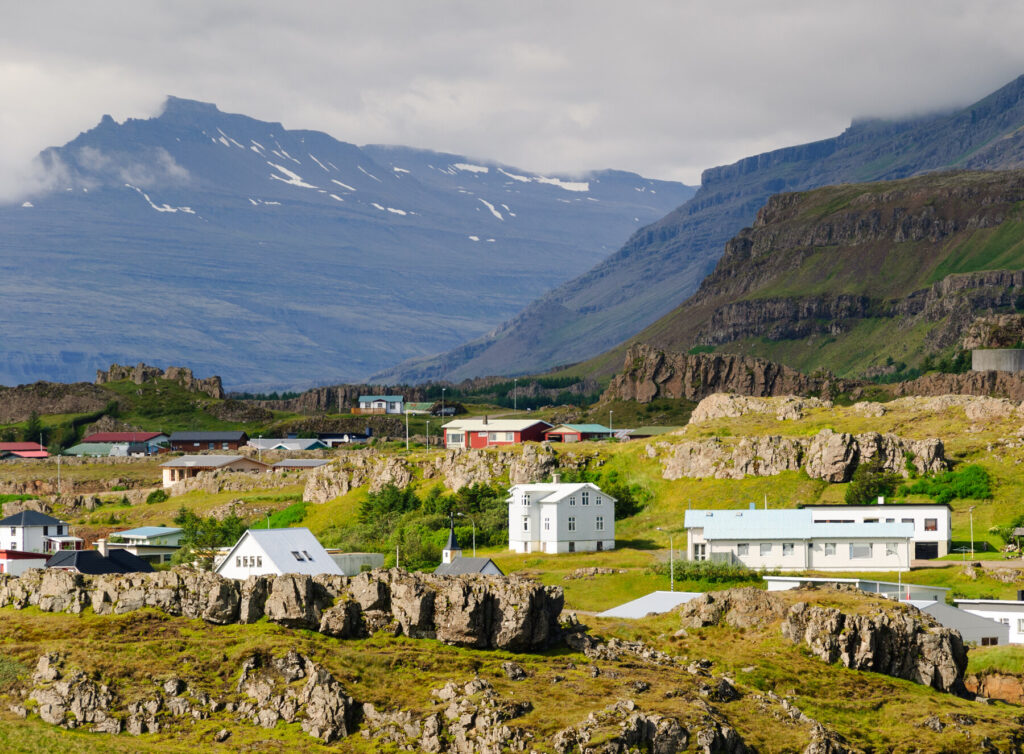
Day 5: Eastfjords and hidden gems
Escape the crowds and experience the true essence of Iceland on your fifth day in the country. The East Fjords are a place where rugged mountains meet the sea, winding roads reveal hidden waterfalls, and small, welcoming fishing villages carry whispers of historic tales.
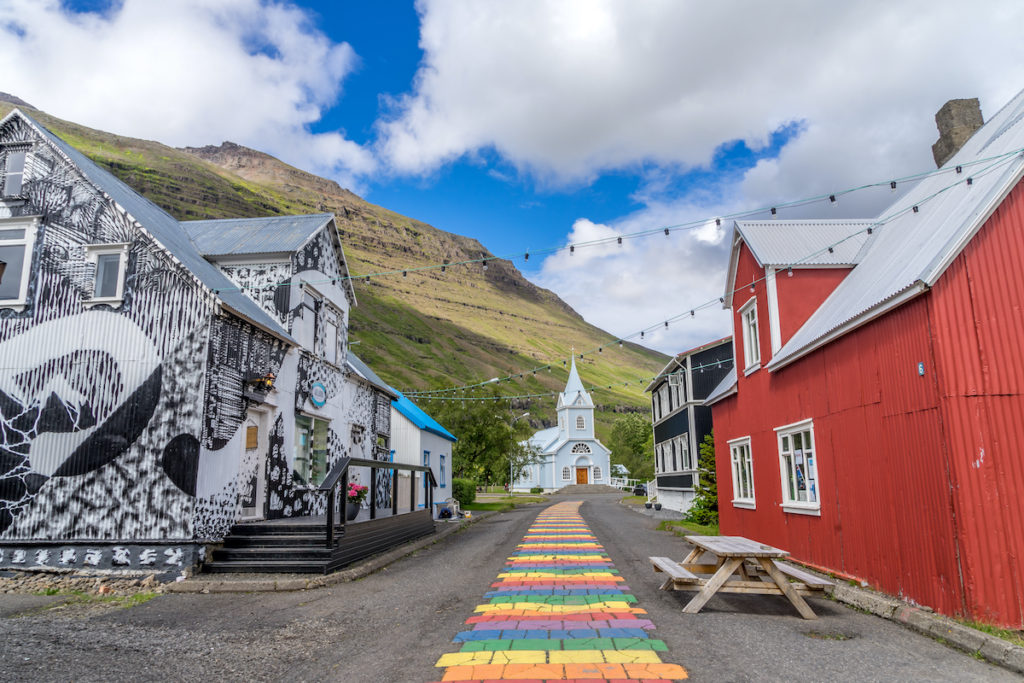
Daytime: scenic Eastfjords drive
The drive itself is the star today. Winding roads hug the coast, offering breathtaking vistas at every turn. Stop to admire the colourful houses of Seyðisfjörður, perhaps grab a coffee in the artsy town centre, and watch fishing boats bob in the harbour at Neskaupstaður or Reyðarfjörður. It’s a long day of driving, but with so many picture-perfect spots, you’ll want to take your time.
Hidden Gem: Hengifoss waterfall
Make a worthwhile detour to Hengifoss, one of Iceland’s tallest waterfalls. After a moderately challenging hike, you’re rewarded with its slender cascade dropping into a dramatic, moss-covered canyon. Legend has it that elves and hidden folk reside here – whether you believe it or not, there’s certainly magic in the air!
Bonus stops: waterfalls, museums and traditional villages
If you’re a hiker, consider tackling Litlanesfoss waterfall, also near Hengifoss. The quaint village of Borgarfjörður Eystri is renowned for puffin watching in summer, while museums like the East Iceland Heritage Museum in Egilsstaðir provide insight into the region’s history.
Dining and accommodation
Experience Eastfjords hospitality at its best by staying in a village guesthouse or small hotel. Try options like Hótel Bláfell in Breiðdalsvík or Wilderness Center in Egilsstaðir. Look out for little local spots serving dishes like freshly caught seafood or hearty Icelandic lamb stew – they’re often the most memorable.
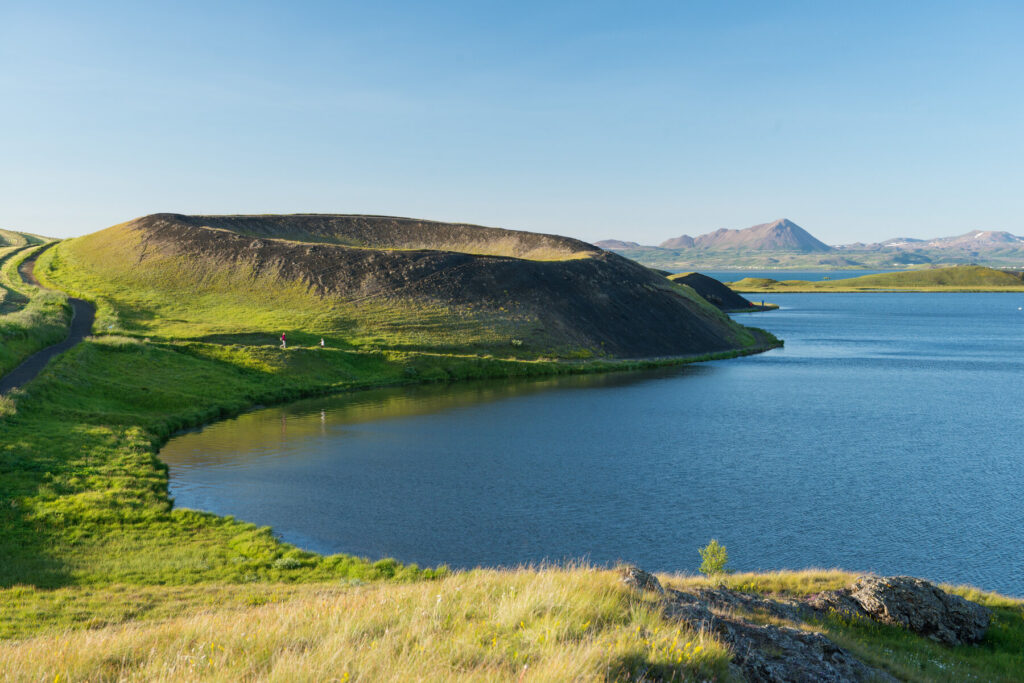
Day 6: Mývatn Nature Baths and geothermal activity
Today, dive into a truly Icelandic experience – geothermal waters, volcanic landscapes, and perhaps a touch of that famous ‘rotten egg’ sulfur smell. It’s a day to feel the power of the Earth beneath your feet and to unwind in a way that’s truly Icelandic.
Morning: Mývatn Nature Baths
Think of this as the Blue Lagoon’s quieter cousin. The Myvatn Nature Baths boast milky blue water rich in minerals and offer stunning views of the surrounding lava fields.
Ease into the day with a long soak in the lagoon or one of the steamy hot tubs – it’s the perfect remedy for any lingering road trip aches.
Early afternoon: geothermal wonderland
The area around Lake Mývatn is a hotbed (literally!) of geothermal activity. Visit the bubbling mud pots and hissing steam vents of Námaskarð Mountain Pass or climb the rim of the Hverfjall crater for panoramic views. Each stop offers a slightly different glimpse into the fiery forces that shape Iceland.
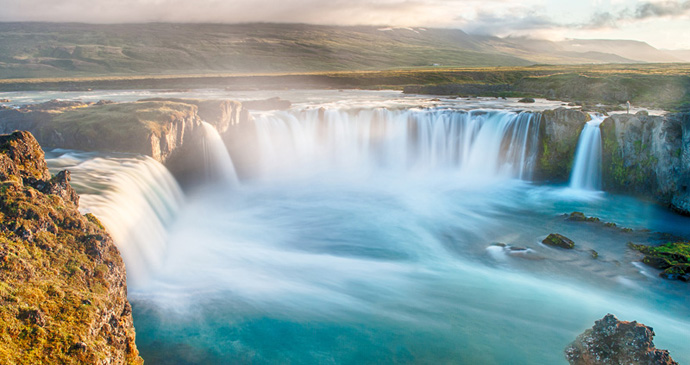
Late afternoon: Goðafoss detour
Goðafoss, nicknamed the “Waterfall of the Gods,” is a majestic sight. Powerful and wide, its cascades thunder into a turquoise pool below. There are trails to explore and viewpoints on both sides, making it an ideal spot for capturing that epic Icelandic shot.
Bonus stops: Dimmuborgir, Mývatn and Laufás
If time allows, Dimmuborgir is a fascinating detour. This otherworldly landscape of volcanic craters, caves, and twisted rock formations creates the perfect backdrop for sparking your imagination. An early start is the best way to make the most of this popular spot, which can get crowded later in the day. Local legend claims it’s inhabited by trolls and the mischievous Icelandic Yule Lads – keep a watchful eye as you explore!
For a break from geothermal wonders, Mývatn is a great spot for birdwatchers. This shallow lake teems with diverse birdlife, making it a haven for keen ornithologists. However, it is quite a long drive from the main route, so it’s best suited for those with extra time or a specific interest in birdwatching.
If Icelandic history piques your curiosity, a detour to Laufás is worthwhile. This traditional turf-roofed farmhouse provides a glimpse into the entire island’s agricultural past and offers interesting exhibits on local life.
Dining and accommodation
Stay near Mývatn Lake for easy access to the baths (consider Sel Hótel Mývatn or Fosshotel Myvatn). Don’t miss dining at Vogafjós Cowshed Restaurant, set on a working farm, or trying the comfort food at Daddi’s Pizza.
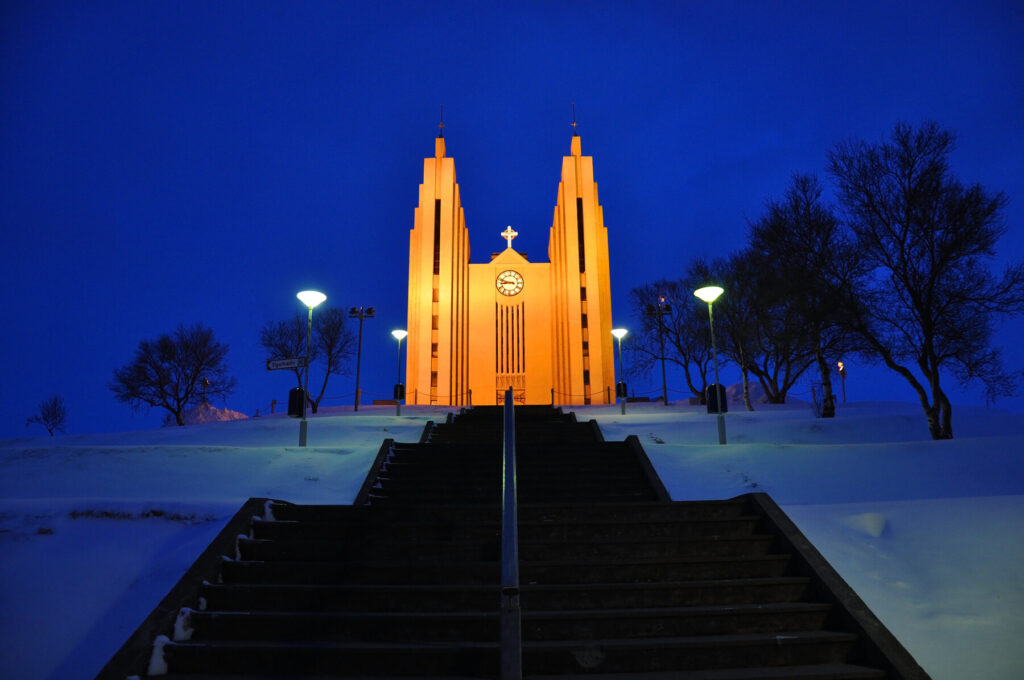
Day 7: Dettifoss waterfall and Akureyri
On day seven of your Iceland Ring Road itinerary, you’ll witness one of Europe’s most powerful waterfalls before easing into the cosy buzz of Iceland’s “second city.”
Morning: Dettifoss
Dettifoss, fed by the mighty Jökulsá á Fjöllum river, is pure power. Standing close (wear your waterproof gear), you’ll feel the spray, hear the roar, and gain a whole new respect for Iceland’s wild side. There are two main access points – choose the west side for better views and the east side for a slightly gentler walk.
Afternoon: Akureyri
Bustling Akureyri, the “Capital of the North,” offers a delightful blend of urban energy and natural beauty. Set at the head of Iceland’s longest fjord, the town boasts a lively atmosphere – surprising for its relatively small size!
Begin your exploration with a stroll through the compact downtown area. Browse the shops for locally-made souvenirs, admire the colourful Nordic architecture, and perhaps enjoy a coffee with views of the harbour.
Next, immerse yourself in some of Akureyri’s highlights. The Akureyri Church, with its distinctive twin-towered design, holds a good place on the hill and is worth a visit.
For a dose of tranquillity, escape to the lush Akureyri Botanical Gardens, one of the world’s northernmost botanical gardens. If good weather is present, it’s the perfect place for a relaxing wander.
Bonus stops: Hvítserkur
If you’re heading through North Iceland, the Hvítserkur basalt sea stack is a quirky sight. Legend claims it is (another) petrified troll, but it looks remarkably like a rhino drinking from the sea. Consider it a photogenic bonus if your route allows for it.
Dining and accommodation
Choose from a range of hotels right in Akureyri’s heart (try Hotel Kea or Akureyri – Berjaya Iceland Hotels). Rub shoulders with locals at restaurants like Greifinn or enjoy modern Icelandic cuisine with fjord views at Strikið.
Day 8: Snæfellsnes Peninsula
Day eight provides a microcosm of everything Iceland does best – volcanoes, glaciers, epic coastlines, and a hint of ethereal mystique. The Snaefellsnes Peninsula offers a sample of the island’s highlights, perfect if you’re short on time but crave those classic Icelandic sights.
You can also find a more complete Snaefellsnes itinerary here.
Morning: scenic coastal drive
Leave Akureyri and turn westward onto the main highway, hugging the coastline towards Snæfellsnes. This drive itself is stunning. Keep an eye out for seals basking on rocks and snow-capped mountains across the fjords.
Afternoon: Snæfellsnes highlights
Kirkjufell Mountain is a must. This weirdly-perfect, cone-shaped peak has earned its nickname “Church Mountain” and was featured in the hit show, Game of Thrones. Its photogenic form makes it a popular spot, so be ready to encounter some fellow admirers.
Park near the viewpoint for those classic shots, or embark on the short, circular, walking path that winds around the base for a different perspective.
Next, experience the raw power of the ocean at Djúpalónssandur. This striking black pebble beach is strewn with the rusted remnants of a shipwreck, a stark reminder of the sea’s strength. Feel the spray on your face as you follow the path towards the water’s edge.
Be aware this area can be exposed to strong winds, so dress in warm layers and choose the best option depending on the weather. The scenic route through the peninsula offers countless opportunities to pull over for even more awe-inspiring views!
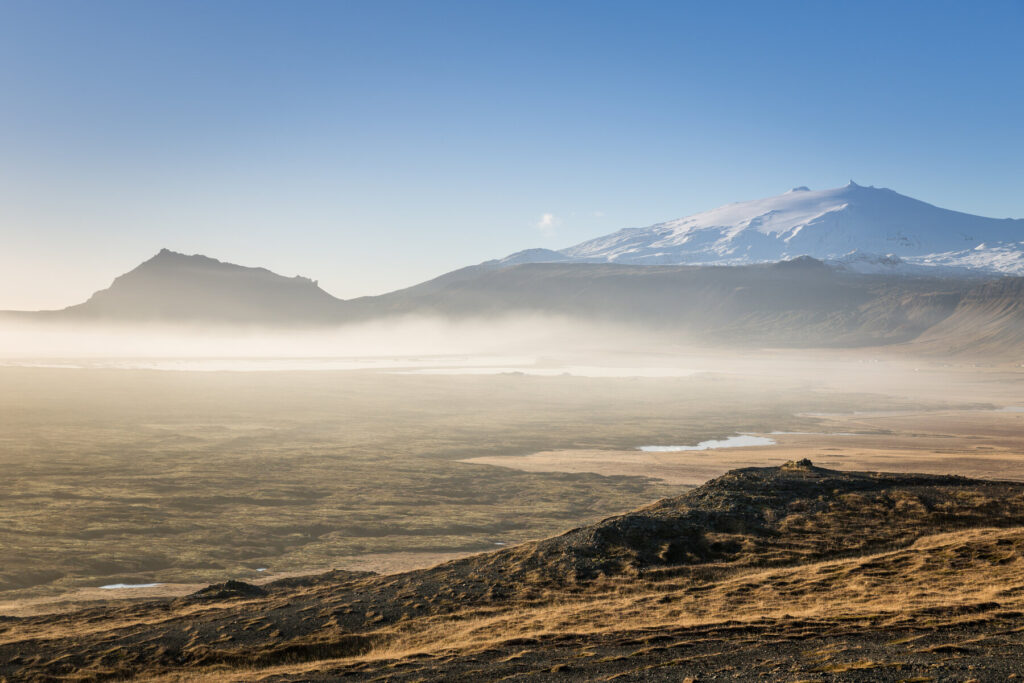
Bonus stop: Snæfellsjökull Glacier
Up for a challenge? Experienced hikers (with guides and the right gear) can tackle an ascent of Snæfellsjökull, the peninsula’s glacier-capped volcano.
Jules Verne fans might recall it featured in ‘Journey to the Center of the Earth’. The views from the top are unreal, but it’s a demanding climb, so choose wisely!
Dining and accommodation
Base yourself in one of the peninsula’s charming villages like Arnarstapi, Hellissandur, or Ólafsvík. Try Fosshotel Hellnar or Hótel Búdir for scenic locations. Cosy restaurants often double as guesthouses, so you can seek out fresh seafood and warm hospitality at the same time.
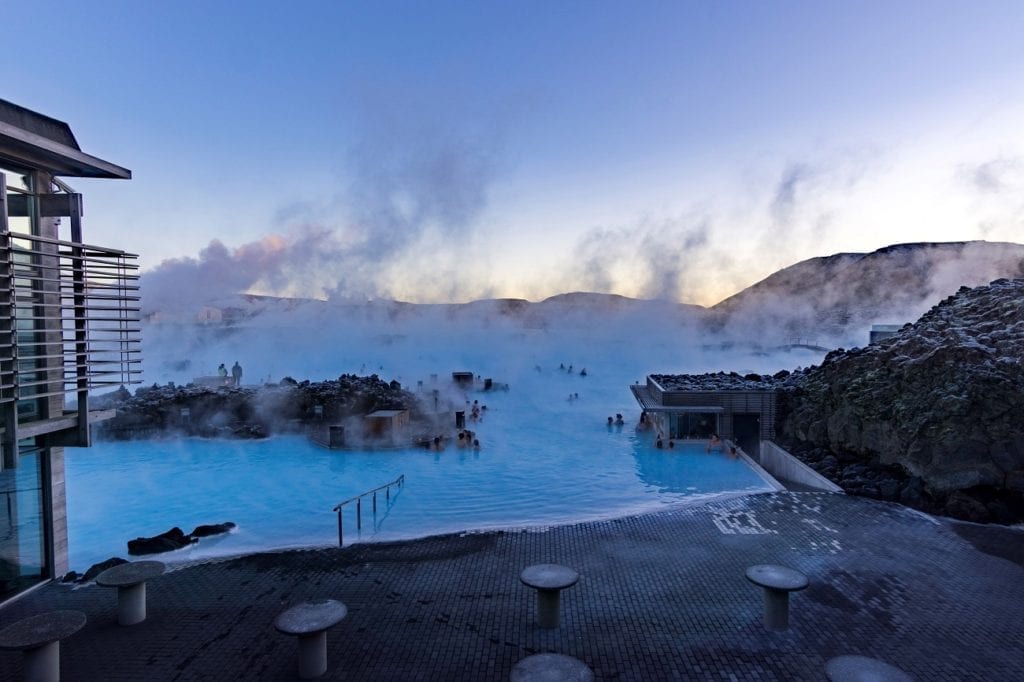
Day 9: return to Reykjavik and whale watching
Day nice is about savouring your last glimpses of Iceland’s landscapes, then topping it off with a wildlife encounter that might just be this round trip’s highlight.
Morning: scenic drive back
There’s no rush today! Take your time on the drive back to Reykjavík, retracing the coastal road, or opt for the inner route through Borgarnes for a scenery change. Make pit stops at your leisure, perhaps grabbing a coffee in a small town or enjoying one last beach walk. Depending on your flight timings, you may even be able to squeeze in a quick soak at the Blue Lagoon.
Afternoon: whale watching
Iceland’s waters are home to whales year-round, and a tour from Reykjavík harbour offers you a chance to spot them. Minkes are the most common, but you might see humpbacks, dolphins, or even orcas. Layer up, grab your binoculars, and head to the viewing platform – there’s something magical about searching for those telltale blows on the horizon.
If you have time after your whale tour, the Whales of Iceland exhibit offers a fascinating insight into these ocean giants.
Evening: a night in Reykjavík
You’re back in the buzzing capital! Stroll Laugavegur, the main shopping street, picking up last-minute souvenirs. For dinner, Reykjavík offers plenty of choices: try the modern Icelandic fare at Matur og Drykkur, fresh seafood at Fiskfélagið, or the cosy vibes of the Old Iceland Restaurant. End your night sampling Iceland’s craft beer scene – Skúli and Mikkeller are great spots.
Accommodation
Choose from a wide range of Reykjavík hotels in various budgets: check out Canopy by Hilton Reykjavík City Centre if you haven’t on arrival, or the boutique 101 Hotel.
Day 10: leaving Iceland
The time has come to bid farewell to Iceland… or has it? While Keflavík Airport might be calling, there’s still plenty left to see. If you’re thinking about extending your adventure but are unsure where to start, here are your options:
Morning: departure day
If today’s the day you fly home, allow ample time to reach the airport, often a good 45 minutes from Reykjavík. Those with early flights might squeeze in one last Icelandic pastry and coffee before hitting the road.
Extend your adventure: options abound
Iceland always has more to offer! Here are three ideas for gorgeous day trips, depending on your time and interests:
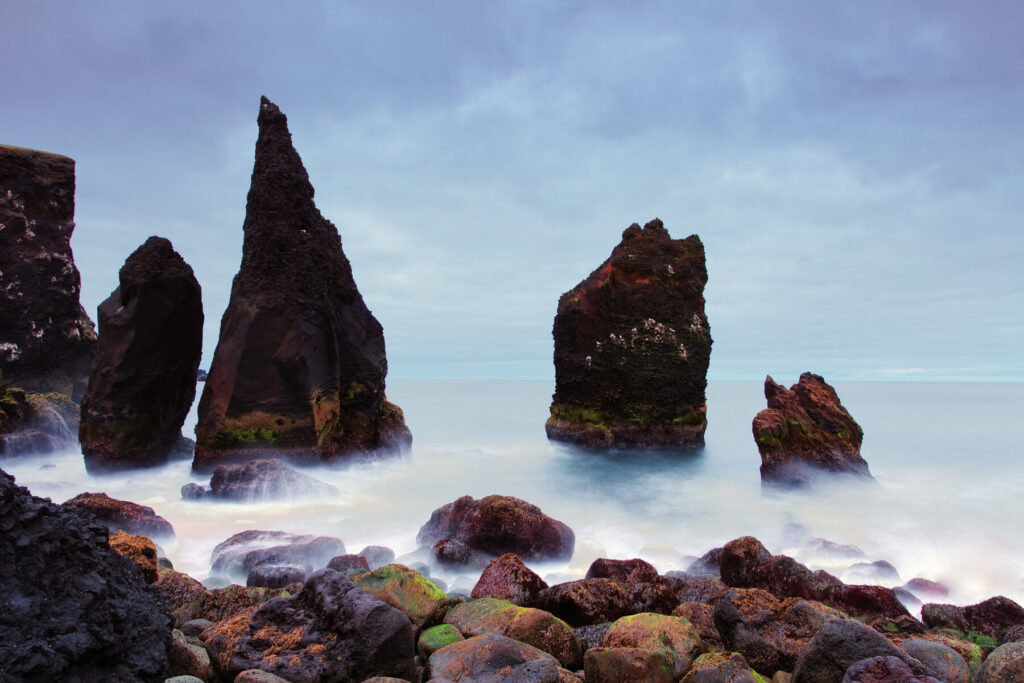
Option 1: Reykjanes Peninsula day trip
This volcanic wonderland is on your doorstep. Visit the Blue Lagoon (if you haven’t already), marvel at the lava fields around Kleifarvatn Lake, and walk the bridge between continents. It’s the perfect option if you just want one more taste of Iceland before departing.
Option 2: hunting for natural hot springs
Want the true Icelandic hot spring experience away from the crowds? Take a hike like the Reykjadalur hot spring thermal river, a short drive from Reykjavík. Soaking in naturally heated water surrounded by wild landscapes is unforgettable. Numerous day tours also run from the capital.
Option 3: Westfjords
If you have more time, this is the ultimate Iceland road trip extension. Ferries run from the Snæfellsnes Peninsula to the Westfjords, a rugged region of towering cliffs, waterfalls like Dynjandi, and vast uncrowded spaces. This is for serious adventurers with time to spare.
Get the whole story
For complete information on planning your Iceland ring road itinerary, check out our guide to Iceland:
